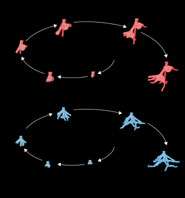CT scanning shows how ants build without an architect

Ant nests are some of the most remarkable structures in nature. Their relative size is rivalled only by our own skyscrapers but there is no architect or blueprint. Instead they are built collectively, through self-organization and the local interactions of ants with one another and their environment. So, how do ants decide what and where to build?
Ant nests are some of the most remarkable structures in nature. Their relative size is rivalled only by our own skyscrapers but there is no architect or blueprint. Instead they are built collectively, through self-organization and the local interactions of ants with one another and their environment. So, how do ants decide what and where to build?
To answer these questions, geologist Dr Nicholas Minter, archaeologist, Dr Kate Robson Brown, and biologist Professor Nigel Franks used high-resolution CT scanning to obtain repeated three-dimensional images of ant nests throughout their excavation.
Previous research on ant nests involved making plaster casts but such methods are destructive. By using CT scanning, this study avoided any destruction and also allowed the researchers to scan the same nest on multiple occasions, thus making it possible to observe individual nests as they were being excavated.
The resulting high-resolution dataset on the four-dimensional growth of ant nests – the first of its kind – allowed the researchers to study in much greater detail the rules of ant nest excavation and the effect of sediment structure on nest architecture.
Dr Robson Brown said: “Our results show that excavation is controlled by the density of ants and is also influenced by the structure of the sediment through which they tunnel. So, ant nest architecture is influenced by both social and environmental factors.”
The findings of this unique interdisciplinary collaboration are published in the Journal of the Royal Society Interface.
More information: Minter, N. J., Franks, N. R. and Robson Brown, K. A. 2011. ‘Morphogenesis of an extended phenotype: four-dimensional ant nest excavation’ J. R. Soc. Interface doi:10.1098/rsif.2011.0377
Provided by University of Bristol



















